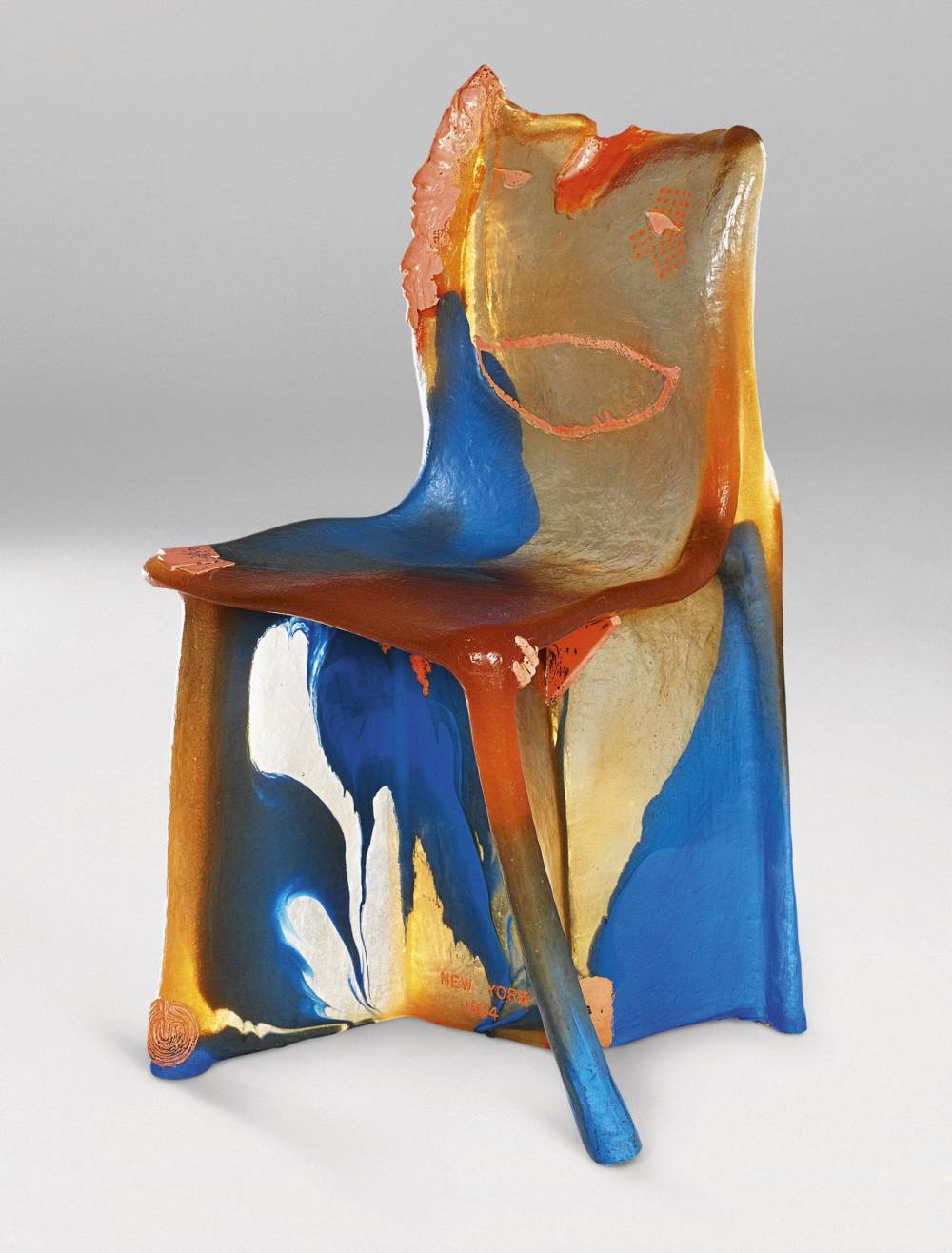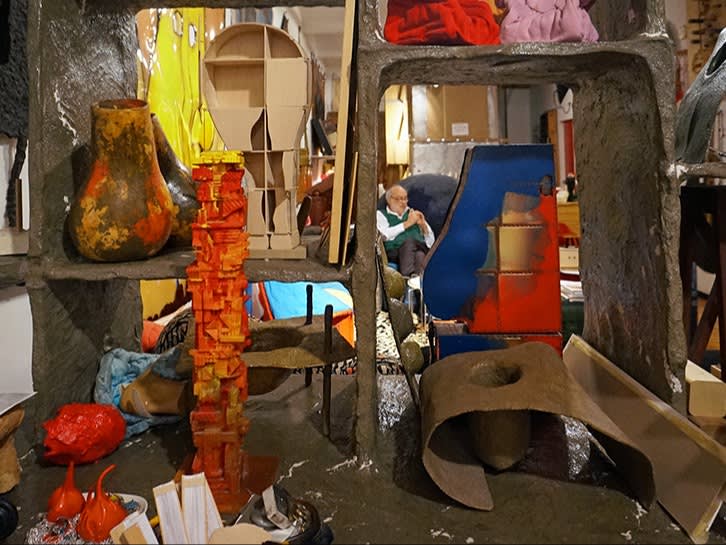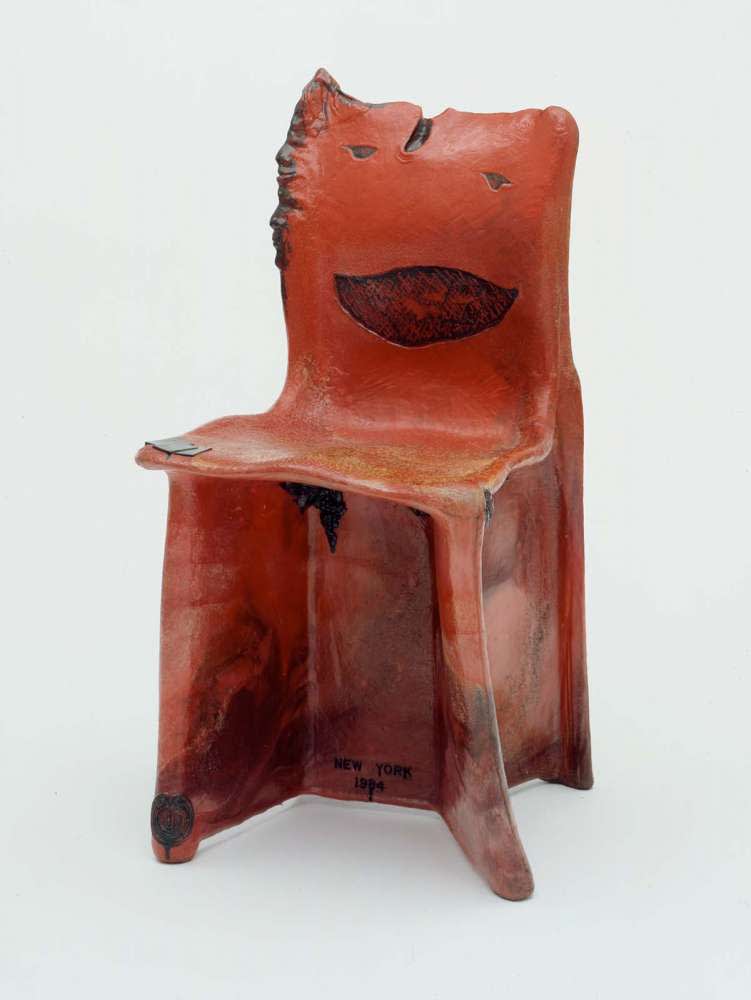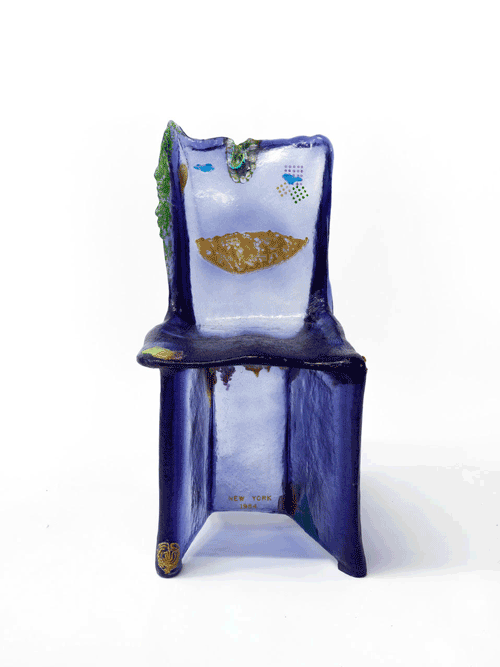
Gaetano Pesce
Pratt Chair (No. 7), 1984
Born in La Spezia, Italy in 1939, Gaetano Pesce studied architecture and industrial design in Venice from 1959 to 1965. Throughout his over five-decade career, Pesce has employed design as a medium to understand the world and the ways in which people perceive the objects around them.
Internationally recognized for his highly conceptual approach to his craft, Pesce employs bold colors and unique methods of materiality to forge poignant connections between an object and its respective user. Since the early 1980s, Pesce has worked almost exclusively with resin and silicones to create pliable, organically shaped designs.

Gaetano Pesce in his Studio
New York, New York
In 1984, Pesce contacted the Pratt Institute in New York requesting to use Pratt’s laboratory, studio space and available tools to experiment with novel industrial materials and create molds for a particular chair he had rendered in wax. The institute honored the Italian designer’s request for a residency and thus the Pratt Chair was named.


Initially, Pesce intended to create a series of eighty-one resin chairs using nine distinct formulas, bearing nine chairs from each slightly different chemical variation. Each object in the initial series of nine Pratt Chairs was formed through hand-injecting resin of increasing densities into a mold Pesce created out of his original wax design. The sinuous patterns and bright colors of each subsequent chair were made possible through the injection-molding process; the windy lines and bleeding colors were a result of the inherent material’s deformation.
Gaetano Pesce
Pratt Chair, 1983
Gaetano Pesce
Pratt Chair, 1983
The first chair in the study, the most malleable of the nine, was as soft as Jell-O and collapsed almost immediately when taken out of the mold. The second variation stood up but toppled over with the slightest touch, while the third supported the weight of a small child. Only the eighth prototype in the set achieved the perfect balance of being both structurally sound and pleasant to sit on – while the ninth was so rigid it became painful and uncomfortable.

Gaetano Pesce
Pratt Chair (No. 6), 1984
Through this project, Pesce sought to explore the physical properties and limitations of an industrial material like urethane resin, calling into question the importance of form and function in design. ‘Design as a form of art’ is a concept that Pesce has often explored throughout his five-decade career, employing the liquidity and density of resin as a means of differentiating between a sculpture and an industrial object. In the case of the Pratt Chair, the first and ninth prototypes are the ones most like a sculpture, as their physical properties make them unsuitable as a chair, resisting the modernist idea that a chair must be both perfect and functional.

Gaetano Pesce
Pratt Chair #7 1984/2018 (purple), 2018
While The Suite of Nine Pratt Chairs represent a physical manifestation of Pesce’s career-long argument that ‘design is a form of art’, suggesting that the thin difference between a design object and art object resides in materiality, the chairs also communicate Pesce’s playful and thoughtful artistic vision through the iconography inscribed in contrasting colors on the chair’s resin. A set of fifteen figurative symbols that express Pesce’s thoughts on design are inlaid atop the chair’s organic shape, ranging from an eye, symbolizing that care is needed for a successful outcome, to a series of dots that illustrate the Pythagorean theorem, noting that the formula is something’s that is part of the scientific knowledge required to perform this work, and the visual of two bodies making love, suggesting that you must enjoy your work in order to do it. There is a hand imprint on the top of the chair’s back, representing the importance of manual work needed to execute the object, as well as a large smiley face, denoting that this artwork is dedicated for people to look, consume and use. A suitcase also appears on the chair, referring to a journey into an unknown experience, as well as a bread symbol, denoting that you sit in the chair to eat and Pesce sells the chair so that he can eat.
Gaetano Pesce
Iconography in The Suite of Nine Pratt Chairs
Though only thirty-four of the intended eighty-one initial chairs were actually produced during the artist’s 1984 residency at Pratt University, new technologies and pigments have inspired Pesce, now 79 years old, to rethink his original Pratt Chair. Utilizing a recently developed mold based on the thirty-four year old design, Pesce has created sixteen new resin chairs, each in a unique color and level of transparency, beginning with pink and advancing to multicolor. Pesce’s reexamination of this three-decade old design suggests that an artist’s work is never over. While resources and technology may evolve, impacting one’s process of creation, good design is forever.


